Focus on FontStructors – Goatmeal Recreates Classic Arcade Game Fonts

This is the fourth in our series of mini-interviews with FontStructors. In this instalment we talk to Goatmeal, a FontStruct user with a singular hobby – FontStructing classic arcade game fonts. Well, it's more than a hobby; judging from his comment on the Bentley Bear 2 page it's a calling:
After watching me push pixels around the FontStruct field last night to make another arcade game font, my wife asked, "Why are you doing this?"
I could only reply, "Because it has to be done!" :^)
I really appreciate the opportunity that FontStruct provides to preserve these classic typefaces from my youth spent in the video arcades!
In reply to my invitation for the interview Goatmeal describes himself as "more of a typeface enthusiast / fontaholic; while I like to think I'm graphically-inclined, I have no formal training – I'm just nuts about typefaces." Well, as it turns out this is exactly what we are looking for for the mini-interviews. While we certainly don't mind having the odd professional graphic artist or hotshot type designer, the common thread in this series is the dedication and the passion these FontStructors display in their work.
Goatmeal

Goatmeal is the Director of R&D for a small vinyl manufacturing company in the Southeastern United States. He graduated from the University of Michigan-Flint, majoring in chemistry with a mathematics minor. While he can draw quite well (wanting to be a cartoonist during childhood), he has no formal training in any of the graphic arts; so, he comes at this from a fan's perspective: a typeface enthusiast, a fontaholic, enjoying typefaces for their purely aesthetic qualities.
What is your relationship to type and typography?
The first two font sets I bought were the Bitstream Font Packs "Star Trek" (1992) and "Star Trek: Next Generation" (1993) – I still have the original diskettes (ed. Although the Font Packs were discontinued most of those fonts are still available). Aside from being a Star Trek fan, it was the first time I noticed typeface styles as art, as opposed to mere conveyances of ideas or thoughts.

Bentley Bear, font from Crystal Castles, © 1983 Atari
Having the same revelation as others in the type design industry, I began to wonder why I liked one type style, but not another? What was it about a certain typeface that did or did not appeal to me? Why did it matter? Should it even matter? A few simple typeface styles could be used for the vast majority of applications across the planet (differences in language-specific glyphs, notwithstanding), but instead, there are hundreds of thousands of different styles available. Most people notice, use them (i.e., read) and subsequently ignore or forget them every day.
What most people aren't realising is that typeface choice is as important to the meaning it conveys as the idea or thought being conveyed – associations, if you will. When the marriage of form and meaning is expected or anticipated, it works. Otherwise, the associations can hinder the effectiveness of the message, even though it can be understood: grunge fonts appear out-of-place on wedding invitations, whereas calligraphic styles are equally incongruous on rave/techno flyers; wide, angular sci-fi display fonts do not imply "fantasy, medieval" themes any more than Celtic and Old English fonts imply "space, robots, futuristic" themes; and don't even try using Comic Sans MS on your resumé!

The Tron font series from Tron, © 1982 Bally Midway Mfg Co.
How did you start out on FontStruct?
Back in March 2009, I was looking for a dot matrix font to replicate an old high school paper I wrote in the mid-80s (a report for computers class on the state of computer animation, focusing heavily on the movie Tron). The perforated paper was starting to deteriorate, and the ink was fading. Since it was originally written on a TRS-80 Color Computer, I couldn't simply port it over to a modern day IBM-clone (yes, I'm old enough to still refer to PCs as IBM-clones).
Wanting to maintain the feel that it could have been ripped from an old tractor-feed printer from 25 years ago, I searched for a font similar to the dot matrix print on the page. Unfortunately, most dot-matrix fonts don't truly capture the pin-strike complexity that printers could achieve in the '80s. That's not to say most 7×5 fonts don't achieve their intended purpose – they are quite good at simulating various visual displays – but none were what I was looking for on this project.

Zenny Coins, font from Black Tiger, © 1987 Capcom
That's when I stumbled upon Fonstruct through Google. Seeing some of the pixel/dot matrix fonts others were sharing, I watched the FontStruct how-to video and started making one myself; that eventually became my DMP-200 RS font. While I did not create an exact match, it does come close to my archived papers from the 1980s.
I once attempted to alter Tommy Cary/MarianFudges' "Texas LED" True Type Font into what eventually became my CASIOpeia font, but it proved too difficult at the time. Having a vast, unstructured field in something like the old Fontographer can be quite daunting to a novice. Even the few copy-protection dingbat/symbol fonts I managed to create to replicating old computer game manuals were all initially based on a grid of individual squares that I would subsequently modify and shape…
That being said, I wasn't crazy about pixel fonts, per se, before my experiences with FontStruct. They only had an inherent appeal to me if they were somehow related to video arcade games, computer games or had a science fiction feel. Now, thanks to FontStruct, minimalist pixel fonts are a category I am thoroughly enjoying.

Buzzard Bait, font from Joust, © 1982 Williams Electronics Inc., and its sequel,
Joust 2: Survival of the Fittest, © 1986 Williams Electronics Games, Inc.
Where did your fascination for vintage arcade game typography originate?
Coming of age during the birth of video games was a tremendous influence on me, as it was for most of my generation.
Aside from typing tutorial computer games (pressing the correct key to blast the letter on the screen), typefaces aren't front-and-center elements in 99.99% of video games – they are ancillary, yet necessary, components. They are mainly used for explaining the game's "plot" or game play instructions, keeping score, indicating level progression and entering initials/words for high-score bragging rites.
Well before becoming a font enthusiast, games that tried to do something different with the design of text appealed to me tremendously – especially those of a science fiction nature. For example, while I did not play Robotron: 2084 often, I was fascinated with the text because it looked "futuristic/computer-like" to me. With FontStruct, it just made sense: instead of using pixels to generate a video screen display, why not use FontStruct pixels to generate a font? The result was Genetic Engineering Error.

Genetic Engineering Error, font from Robotron: 2084, © 1982 Williams Electronics Inc.,
and its sequel, Blaster, © 1983 Williams Electronics Inc.
You seem quite obsessive (in a positive sense) in your efforts to catalogue all these fonts. How far do you want to take this project?
It's an obsession borne from being a perfectionist with a penchant for collecting.
I'm afraid that it may be coming to an end pretty quickly. Most games used the design style represented in The Video Arcade Game Font. Others used simple sans serif designs that aren't terribly interesting. For numerous games, it's difficult to get a full set of characters, and one of my goals was to make complete fonts for others to enjoy and use. Also, this is a rather selfish project – I'm only choosing fonts that appeal to me, rather than archive each and every available sample. Add to that, as graphics became more sophisticated in the mid-to-late '80s, typeface design styles became less distinctive and more homogenized. That's not to say that there aren't styles worth replicating, but they tended to become functional/utilitarian – very likely to avoid competition with the enhanced graphics on the screen.
I have branched out into other categories, replicating existing fonts designs in pixel style (Material Electrons, OCR-A), and other types of LCD/video display fonts (CASIOpeia, Hand Aviator series).

Mag Not Mad, font from Mag Max, © 1985 Nichibutsu / Nihonbussan Co., Ltd.
What are the aspects of FontStruct that make it so appealing?
Democracy– This is a 'free' program for everyone. While not every font may be a masterpiece (the infinite monkey theorem), everyone with Internet access can use the program to implement their design.Liberation– With limited shapes and strict placement on a pre-set grid, this may seem paradoxical, but you don't need to learn how to use professional type design software, implement Beizier curves, worry about kerning, etc. If you have a type design idea, you can create it using FontStruct just as easy as using pencil and paper.Therapeutic– I have found pushing pixels around the FontStruct field to be quite relaxing.Achievement– In as little as 20-30 minutes, you can complete an entire alphanumeric set, giving a sense of accomplishment.Ownership– The ability to display and explain your font creations for others to enjoy.Community– The ability to share your creations with others and the ability to expand upon the ideas of other font designers creates a tremendous sense of community.

Son Of Zaxxon, font from Future Spy, © 1984 Sega; their second Zaxxon-like game.
Header imageby Yves Peters
















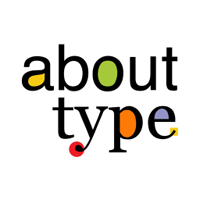
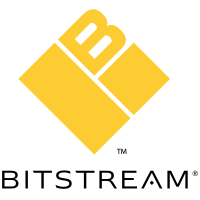




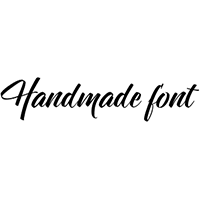


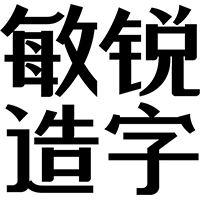



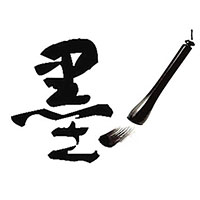





 闽公网安备35010202000240号
闽公网安备35010202000240号